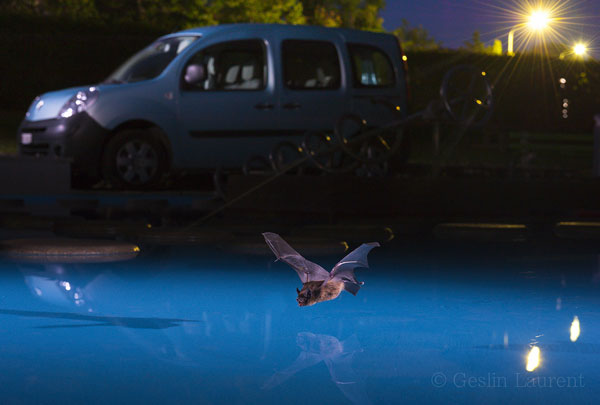BIOTIC IMPACTS OF URBANISATION
The oldest and dominant paradigm in urban ecology is ECOLOGY IN CITIES. It’s pretty much just ecology, but with a focus on cities (as opposed to natural or other human-dominated habitats) and how ecological patterns and processes change with urbanisation. Meaning, the biotic impacts of urbanisation. And even though it’s the most conventional paradigm, it’s hardly passé—indeed, there are still many unanswered questions.
Including several about various types of pollution. One is artificial light – my students have studied its impacts on bats at water and of the LED retrofits on bats and insects. Other projects they’ve done in this area include mammalian uptake of metals and the effects of air pollution on bats.
Next, some students have addressed various urban sources of disturbances, often using acoustics. Three used soundscape ecology – which quantifies biodiversity-wide (as opposed to species-specific) effects – they focused on the dawn chorus in relation to road traffic and the impacts of military aircraft and aviation generally on diurnal animals. And then another applied bioacoustics to study an emerging source of disturbance—drones.
Of course, there are also many landscape-level changes in cities, with fragmentation a big one. I’ve had two students do research in this area, including on how the occurrence of potential seed dispersers changes in fragments at different stages of succession and whether green corridors mitigate the impacts of fragmentation on bird diversity.
But cities present other challenges to biodiversity. One is the replacement of certain natural resources with anthropogenic ones. Indeed, one student studied the use of artificial roosts by urban bats which, in other contexts, only use foliage roosts. Another challenge is the increase in invasive species, including domestic cats, which can decimate wild-animal populations. One of my students quantified predation by cats on animals.
Moving forward, I aim to probe further into the above questions and delve more deeply into two areas that I expect are pathways to meaningful careers for students.
One builds on the above mentioned aviation-related work, specifically the issue of a booming drone industry and what it means for biodiversity. While drones can be used for many purposes, they are especially useful in cities, where they can, for example, deliver parcels (and eventually people) while avoiding delays caused by road congestion, and provide real-time security, traffic and infrastructure monitoring. While researchers have investigated the responses of wildlife to drones (and largely observed negative impacts), the focal taxa have mostly been on the ground or in the water—not in the airspace. In 2022, I completed a pilot study of the ecological impacts on bats over New York City parks; in summer 2023, I am analysing the data and preparing to draft the resulting paper.
The other emerging area is road ecology. It grows as we increasingly recognise that roads affect biota in ways besides roadkill (though that too, needs more study, e.g., for bats). Roads have evolutionary impacts, are conduits for species introductions and are major sources of pollution. I’m interested in platinum-group elements (PGEs). These rare metals, especially platinum, palladium and rhodium, are used in catalytic converters. And so, their presence in the environment is linked to roads and urbanisation, and their emissions peak in the type of stop-and-go traffic you find on city streets. But, despite evidence that PGEs accumulate most in soils near congested roads, we know almost nothing about uptake and impacts in terrestrial wildlife. Given in vitro work showing they can compromise renal function in rodents, this is an area worth investigating.
Northern bat (Eptesicus nilssonii) drinking from an urban water body.
Photo (with permission) by Laurent Geslin.
More of his awesome photos of urban wildlife here.

